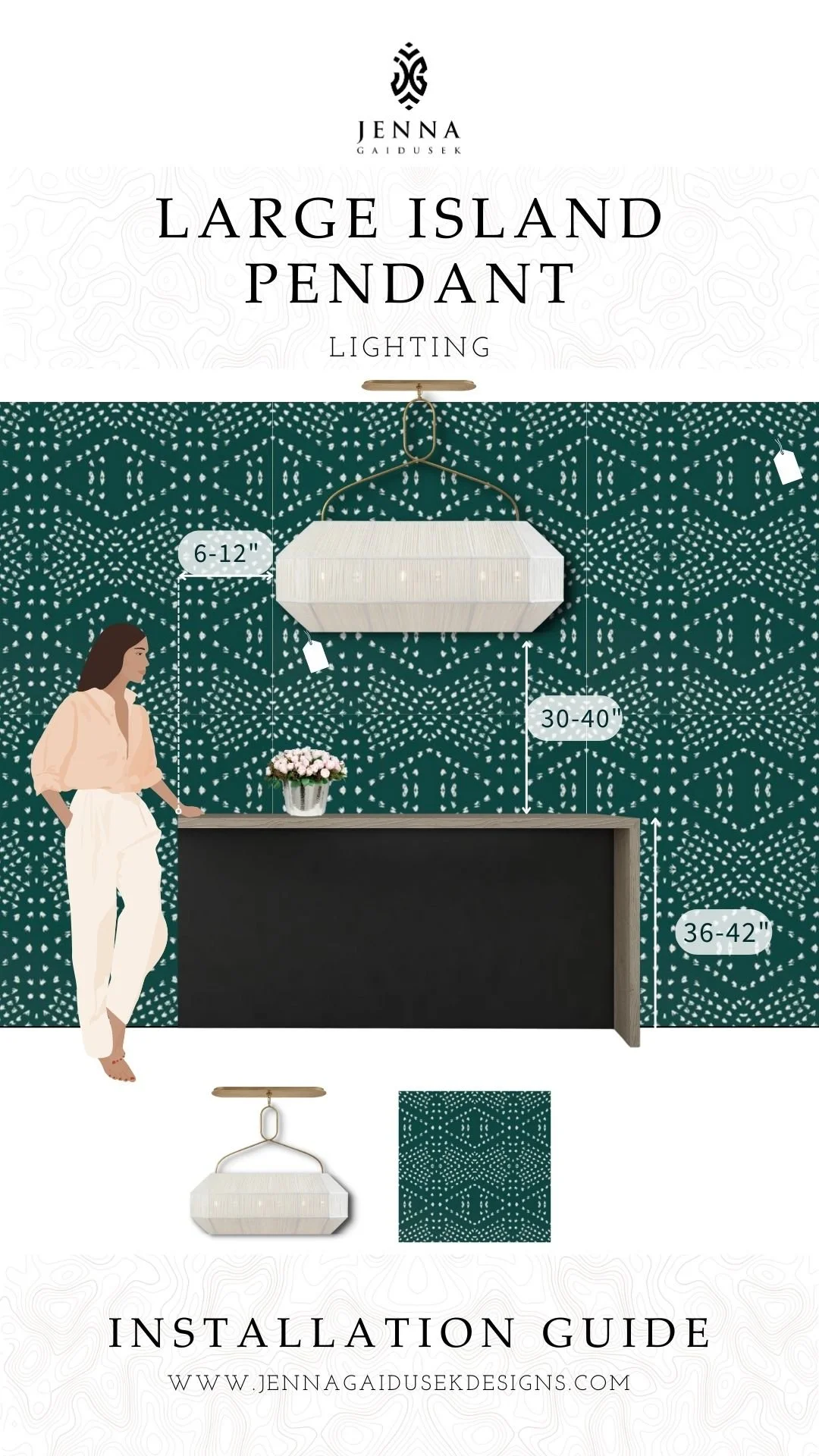Types of Lighting Explained
The fastest and easiest thing you can do to update a space (weather that be an update in your home or after you purchase a fixer-upper house) is to update your lighting. But if you are a DIYer and new at this, you may not know the different types of lighting, how to best utilize them or where to shop for the best lighting for your project. That’s where I come in with ALLL the lighting tips for you.
What are the different types of lighting?
Natural lighting: As the name suggests, this type of lighting comes from the sun and is the most energy-efficient type of lighting. It can be used in a variety of ways, such as through windows, skylights, or light tubes. It can be used to brighten up a room or to provide a source of light for specific tasks.
Incandescent lighting: This type of lighting uses a filament that is heated by an electric current to produce light. The filament is usually made of tungsten and is enclosed in a glass bulb. Incandescent bulbs are inexpensive and widely available, but they are not very energy efficient and have a relatively short lifespan.
Fluorescent lighting: This type of lighting uses a gas and a phosphor coating on the inside of a tube to produce light. The gas is typically mercury vapor, and the phosphor coating can be made of various materials. Fluorescent lights are more energy efficient than incandescent lights and have a longer lifespan, but they can flicker and hum, and they contain small amount of mercury which require a special disposal.
LED lighting: LED lights use semiconductors to produce light. They are extremely energy efficient and have a very long lifespan. They also produce very little heat and can be used in a variety of colors and temperatures. LED lights can be used for both indoor and outdoor lighting.
Halogen lighting: This type of lighting uses a small quartz capsule filled with a halogen gas and a tungsten filament to produce light. The halogen gas helps to prolong the lifespan of the filament and makes the light produced by the bulb brighter and more intense. They're energy efficient than incandescent and have a longer lifespan.
High-Intensity Discharge (HID) lighting: These lights use an electric arc to produce light, typically in a sealed glass or quartz arc tube. They are commonly used for street lighting, parking lots, and other outdoor lighting applications. HID lights are very energy-efficient and have a long lifespan, but they can take a few minutes to reach their full brightness and may require special ballasts.
Types of Lighting for your home
Task lighting: This type of lighting is used to illuminate specific areas or tasks, such as desk lamps or under-cabinet lighting. It's typically used to provide additional light in areas where natural light is not sufficient, or to provide light for specific tasks such as reading, cooking or working.
Ambient lighting: This type of lighting is used to provide overall illumination and set the mood in a room. It can include chandeliers, ceiling lights, wall sconces, and floor lamps. It's used to provide a general level of light throughout a room and to create a comfortable and inviting atmosphere.
Accent lighting: This type of lighting is used to highlight specific features or objects in a room, such as artwork, plants, or architectural elements. It can be used to create a focal point in a room or to draw attention to specific features.
Decorative lighting: This type of lighting is used to add aesthetic appeal to a room. It can include chandeliers, pendant lights, wall sconces, and table lamps. It's used to enhance the overall design and decor of a room, and to add a touch of elegance or style.
5 Ways Lighting Can Improve Your Space
Updating the lighting in your home can change the vibe completely! It changes how you function, feel and interact overall in the space. Does it bring you joy, happiness, or tranquility when you are in it? Overall, updating your lighting can be an easy and effective way to refresh the look and feel of your home and make it more functional, energy-efficient, and visually appealing.
Here are a few ways that updating your lighting can change your home:
Improved functionality: Updating your lighting can help to improve the functionality of your space. For example, task lighting can be used to provide additional light in areas where natural light is not sufficient, or to provide light for specific tasks such as reading, cooking, or working.
Increased energy efficiency: Upgrading to energy-efficient lighting options, such as LED or fluorescent lights, can help to reduce your energy consumption and lower your energy bills.
Enhanced aesthetics: Updating your lighting can help to enhance the overall aesthetic of your home. For example, decorative lighting can be used to add a touch of elegance or style to a room, while accent lighting can be used to highlight specific features or objects in a room. Neon signs can add a level of “fun or whimsy” to the room.
Improved mood and atmosphere: Updating your lighting can also help to improve the mood and atmosphere of your home. For example, ambient lighting can be used to create a comfortable and inviting atmosphere, while accent lighting can be used to create a dramatic or focal point in a room.
Increased home value: Updating your lighting can also increase the value of your home. A well-lit home can look more spacious and welcoming, making it more attractive to potential buyers.
9 Top Tips for Buying New Lighting
When buying new lighting, there are several things to consider ensuring that you are getting the best piece for your space and needs. Here are some tips to help guide you through the process:
Consider the function: Will the light be used for task lighting, ambient lighting, or accent lighting? Different types of lighting serve different purposes, so it's important to choose the right type for the function.
Size and scale: Make sure the light fixtures you choose are in proportion to the room and the furniture, Be sure to download my lighting installation guide for help with this! A large chandelier in a small room can be overwhelming, while a small pendant light in a large room may not make much of an impact.
Style: Choose lighting fixtures that complement the overall style of the room and align with your personal style identity.
Color Temperature: Don’t forget about your bulbs! You can choose the right color temperature of the light. Warm light (2700K) is ideal for living rooms and bedrooms, while cool light (5000K) is better for bathrooms and kitchens.
Compatibility: Ensure that the light fixtures you choose are compatible with the existing electrical wiring and switches in your home. But always hire a professional!
Energy efficiency: Look for energy-efficient lighting options, such as LED or CFL bulbs, which use less energy and have a longer lifespan than traditional incandescent bulbs.
Dimmer Switch: If you want to control the brightness of the light, install a dimmer switch. It will allow you to adjust the light level according to your needs and mood.
Brand and Quality: Not all products are created equally! This is where my expertise comes in but also- realistic expectations of what things cost these days. Research and select a reputable brand with good quality products. Invest in high-quality fixtures that will last for years and stand up to regular use.
Professional help: Consult a professional designer or electrician if you need help choosing the right lighting fixtures for your space.
7 Tips for Hanging Lighting Fixtures
There are a few rules to follow to ensure safety and proper installation. These include:
Check the weight: Make sure the light fixture you are installing can be safely supported by the ceiling or wall where it will be hung. The weight of the light fixture should be within the weight limit specified by the manufacturer or by local building codes.
Check the wiring: Make sure the electrical wiring in the area where you will be installing the light fixture is adequate for the power requirements of the fixture. If necessary, hire a licensed electrician to upgrade the wiring.
Check the location: Make sure the light fixture will not be obstructed by furniture or other objects and will provide adequate light in the area where it will be hung. Also, it is important to check that the location is appropriate for the type of light you are installing.
Use the right hardware: Use hardware that is appropriate for the type of ceiling or wall where the light fixture will be hung. Make sure to use the right size and type of anchors, screws, or brackets to securely support the light fixture.
Turn off power: Before installing or working on any electrical fixtures, make sure to turn off the power to the circuit or area where you will be working.
Follow instructions: Carefully read and follow the instructions that come with the light fixture, and make sure to use the correct tools and materials for the installation.
Have it inspected: Once the installation is done, it is highly recommended to have it inspected by a professional electrician to ensure that it was done correctly and safely.
**It is always recommended to consult a licensed electrician if you have any doubts about the installation process.






